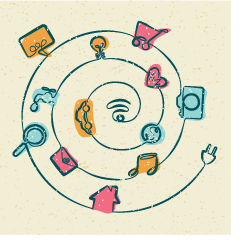 Last year, the rise of the Internet of Things (IoT) was covered by mainstream and tech trade media almost as closely as the U.S. presidential election.
Last year, the rise of the Internet of Things (IoT) was covered by mainstream and tech trade media almost as closely as the U.S. presidential election.
As consumers saw the potential for their myriad devices to become smarter and more tightly connected, businesses began investing in developing IoT capabilities. For example, refrigerators in connected homes are fitted with internal cameras so that homeowners can see how much milk is left, even while standing in the supermarket. For parents of teen drivers, the Hum "connected vehicle" device from Verizon Wireless provides text or email alerts if a vehicle exceeds a maximum speed, or if it moves outside a preset boundary area. Such devices aim to make consumers' lives easier and more efficient—and, in the case of the Hum, safer—while saving time and money.
Just as the universe of IoT devices, services, wearables, handhelds, and cloud-based software solutions is transforming the consumer experience, it's also beginning to transform the insurance marketplace. Old-line carriers and startup Web-based insurers alike are pursuing new technology offerings.
Complete your profile to continue reading and get FREE access to Treasury & Risk, part of your ALM digital membership.
Your access to unlimited Treasury & Risk content isn’t changing.
Once you are an ALM digital member, you’ll receive:
- Critical Treasury & Risk information including in-depth analysis of treasury and finance best practices, case studies with corporate innovators, informative newsletters, educational webcasts and videos, and resources from industry leaders.
- Exclusive discounts on ALM and Treasury & Risk events.
- Access to other award-winning ALM websites including PropertyCasualty360.com and Law.com.
*May exclude premium content
Already have an account? Sign In
© 2024 ALM Global, LLC, All Rights Reserved. Request academic re-use from www.copyright.com. All other uses, submit a request to [email protected]. For more information visit Asset & Logo Licensing.







